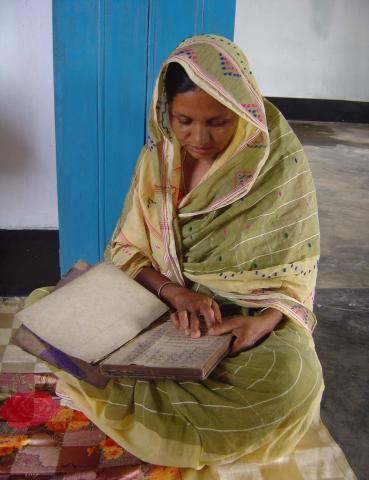
Aims and objectives
Kerala is home to a vast and rich collection of manuscripts spread across public and private repositories. Written in languages such as Malayalam, Sanskrit, and Arabic, these manuscripts are spread all over the region in state-sponsored repositories and archives, private, religious and educational institutions as well as family collections.
Kerala has a unique contribution to the fields of intellectual thought from early times. There is a rich tradition of literature surviving in Kerala on areas pertaining to philosophical insights, scientific systems, artistic traditions and architectural techniques. The scientific traditions range from mathematics, astronomy, metallurgy, diverse medicinal systems, agricultural practices of farming and cultivation, trade and commerce, statecraft and government, the martial arts of combat and warfare. The artistic traditions cover texts and commentaries on performing arts like music and dance, and ornamental or decorative crafts like carving and painting, pottery and metalwork. There are several texts from Kerala on theory and practice of construction including those on building and architecture. Innovative progress in mathematics (which later came to be known as the Kerala School of Mathematics) flourished in Kerala during the fourteenth to the sixteenth centuries, as well as in astronomy through the computation of planetary latitudes.
It is also hoped to unearth some vital documents relating to Kerala‘s trade route. For the last two millenia, Kerala had the unique advantage of coming into contact with several cultures including Greeks, Arabs, Jews, Romans - and later the Portuguese, the French and the English - and other merchants and mariners from across the world through an active trade link across the seas. This interaction through the centuries resulted in great cross-fertilisation of ideas and knowledge, transforming the cultural scenario of the land. The peaceful co-existence of religions such as Hindu, Muslim and Christian is a special feature of Kerala culture. There are several documents on Syrian, Jewish and Arab history, religion and culture that lie with churches, mosques and other such places. There are texts in Latin and Greek, comprising trade documents written like handbooks or manuals based on facts and rationale, and there are also texts containing fiction and legends pertaining to Kerala‘s interaction with other cultures.
This knowledge heritage will collectively combine to create a knowledge resource that is highly pertinent to the study and exploration of Kerala’s history and culture. A major portion of the manuscripts in the repositories are old and dust-ridden, and mostly in a state of neglect, tucked away in cupboards or tied up in gunny bags. Most of the manuscripts are around 300 - 400 years old. However, some of them are very rare and important, and are around 600 - 700 years old.
The manuscripts kept in private repositories are dusty, brittle and are under the daily threat of damage due to lack of knowledge for preservation. Until recently, consigning manuscripts into the sea or river on auspicious days was considered the best practice to preserve them, for avoiding the sin of witnessing their decay. There were also age-old gender-discriminatory practices such as a ban on women touching manuscripts. The knowledge-bearers who deciphered, interpreted and used these documents are also dwindling today.
Before these manuscripts vanish due to neglect and lack of facilities for proper storage, they need to be digitised, to disseminate the knowledge. The project will identify, document, digitise and create a digital archival repository of 200,000 pages of palm leaf manuscripts from five districts in Northern Kerala, India. The archive of digital material generated through the project will be housed at FOLKLAND: International Centre for Folklore and Culture in Kerala. A copy will be deposited with the British Library and repository owners will receive a digital copy of their own material.
Outcomes
950 palm leaf manuscripts have been digitised, approximately 200,000 pages. These manuscripts include Kerala’s contribution to diverse disciplines such as history, the sciences, mathematics, architecture, philosophy and scripture – a region rich in traditional knowledge. The majority of manuscripts in repositories were in a state of neglect, stored in cupboards or tied up in gunny bags. Prior to digitising, the manuscripts were cleaned using soft bristle brushes and charcoal applied to increase their legibility.
Copies of the manuscripts have been deposited with FOLKLAND and the British Library, and a DVD copy given to the owners of the manuscripts. Workshops on preventive conservation were held for owners, so that they may better safeguard them for the future. The project has succeeded in creating awareness and knowledge on the need to preserve the manuscripts and that the original manuscripts should be in safe storage, with only the access copies available for reading and sharing.
The records copied by this project have been catalogued as:
- EAP584/1 Folkland Collection of Palm Leaf Manuscripts [15th century-17th century]
- EAP584/2 Rajaraja Varma Collection of Palm Leaf Manuscripts [16th century]
- EAP584/3 Narayanan Namboodiri Collection of Palm Leaf Manuscripts [16th century]
- EAP584/4 Damodaran Namboodiri Collections of Palm Leaf Manuscripts [17th century]
- EAP584/5 Sanskrit Mahavidyalaya Collection of Palm Leaf Manuscripts [15th century-17th century]
- EAP584/6 Harijayanthan Namboothiri Collection of Palm Leaf Manuscripts [16th century-17th century]
- EAP584/7 Chandu Vaidyar Collection of Palm Leaf Manuscripts [16th century-17th century]




